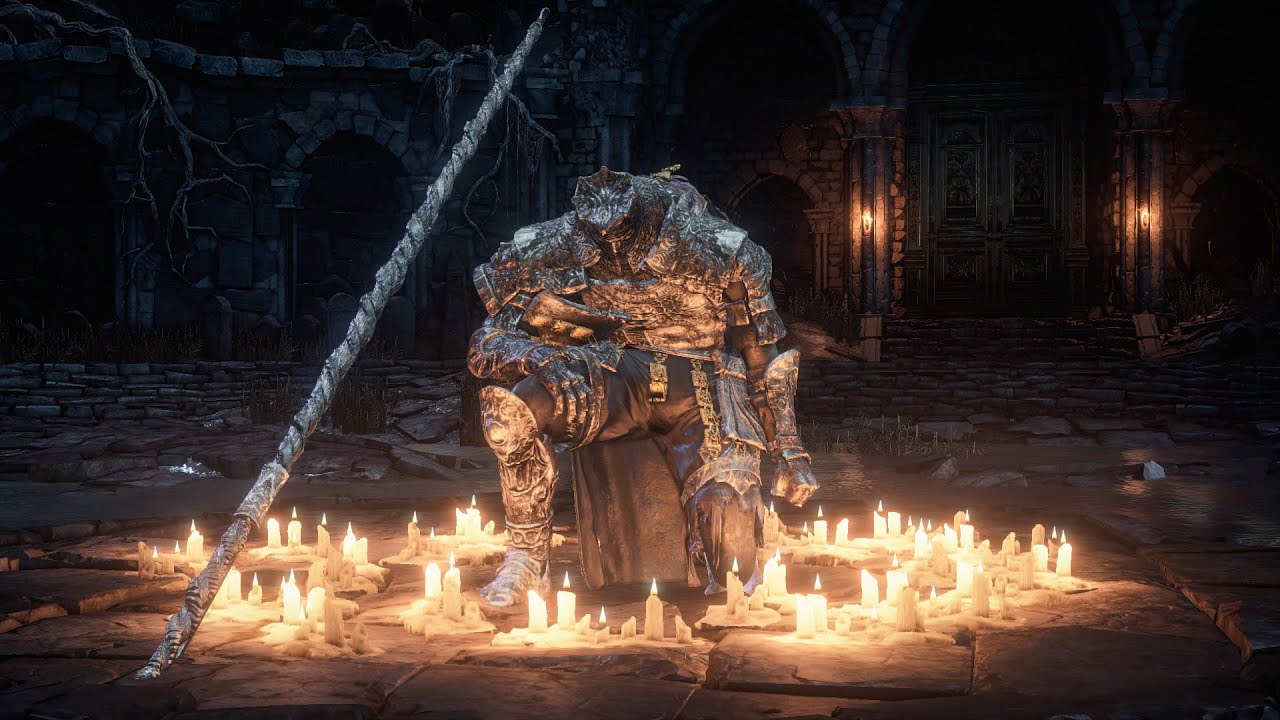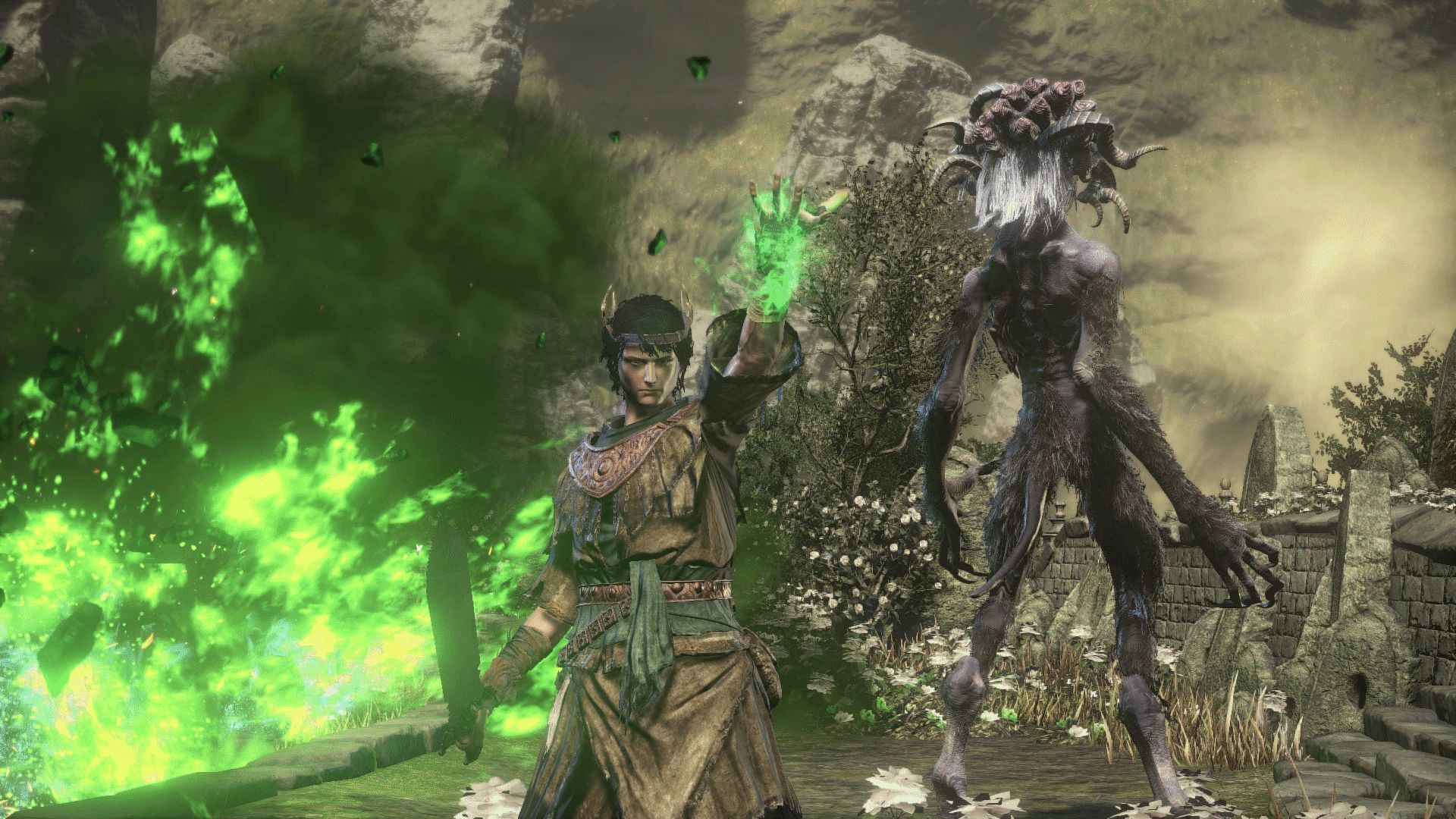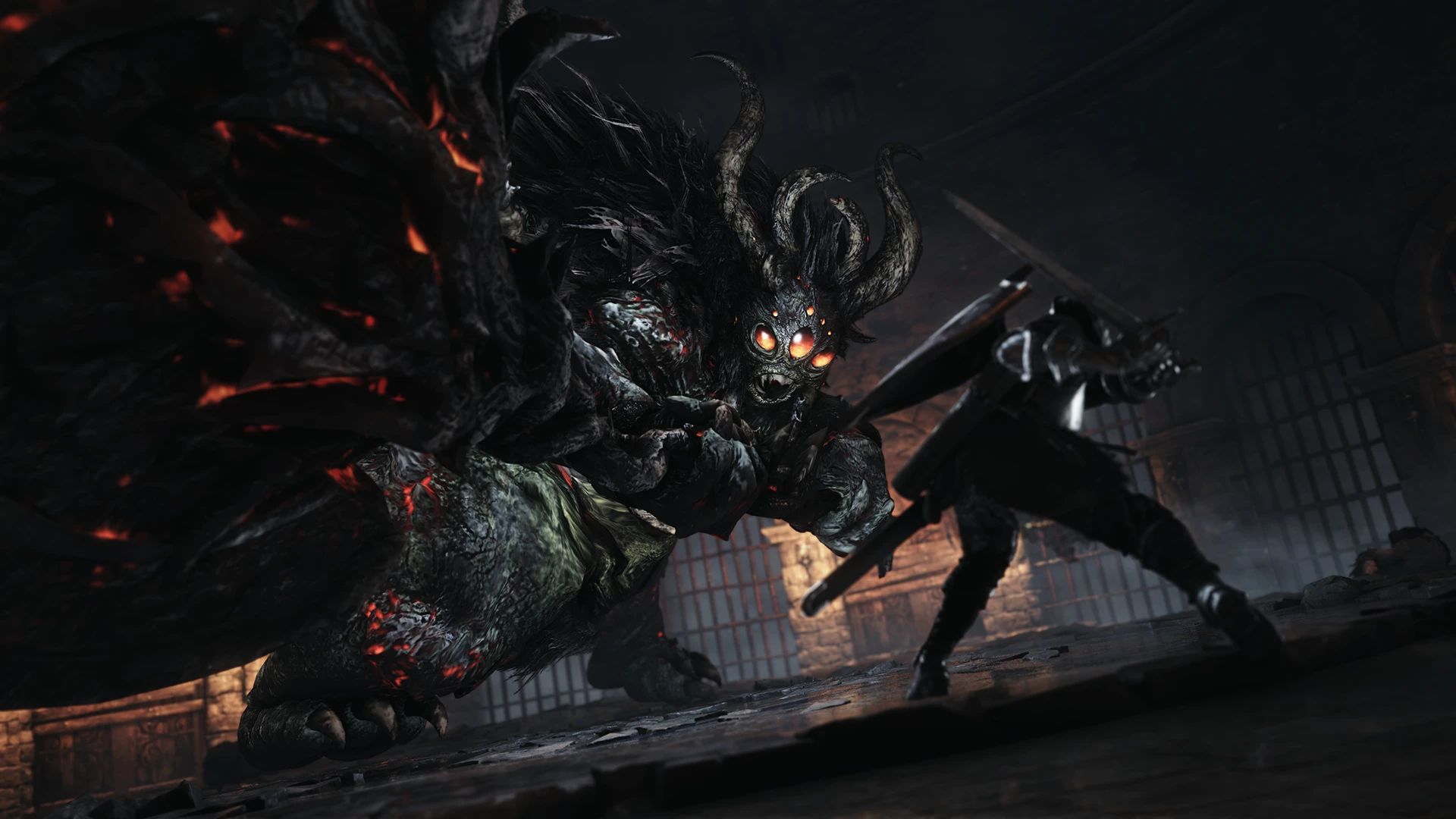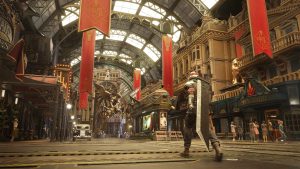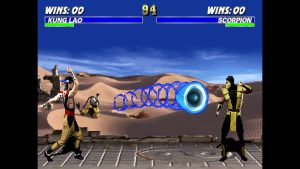
When you think of Dark Souls, you think of the franchise that truly put FromSoftware on the map for many players, even after the breakout acclaim of Demon’s Souls. When it comes to Dark Souls 2, there’s usually a divide between those who love it and those who outright despise it. Dark Souls 3, in that regard, sits at an interesting place, both in the overall trilogy and with regards to the developer’s overall work.
The final entry in the acclaimed series, Dark Souls 3 feels like a culmination of the franchise and director Hidetaka Miyazaki’s experience with it (and Bloodborne). Released in March 2016 for Xbox One, PS4 and PC in Japan and in April worldwide, it would become Bandai Namco’s fastest-selling game to date, with three million copies shipped by May (a record only beaten by Elden Ring). As of May 2020, it sold over ten million copies. Considering how the franchise started, to see a niche genre that favored difficulty and repeated dying become so successful and influential was great.
In many ways, Dark Souls 3 could be considered unremarkable. Some have called it a celebration of the series, packing in familiar elements, places and enemies into one giant send-off (and that’s before getting to the DLC). Others felt it reused too many familiar elements from the series (“Poison swamps? Boo! Get better material!” went the memes). Regardless, there’s no denying its near-universal acclaim from critics, with an 89 Metascore for PC and PS4 and 87 on Xbox One. Even the user scores are at a solid 9, indicating Universal Acclaim.
Like its predecessors, the story begins with fire, this time in the Kingdom of Lothric. As the Age of Dark approaches, the Undead begin to rise, including the player character. Known as the Ashen One, the rest of the world is eager to rend you to pieces.
If you’ve experienced the narrative in one Souls game, you likely know the drill by now. You have multiple wordless cutscenes, environmental story-telling that hints at occurrences, flavor text on items that fill in the blanks, conversations with NPCs that shine more light on the world when they’re not being cryptic, and, of course, quests that are easily missed.
Nevertheless, exceptional stories abound throughout the Kingdom of Lothric. From Pontiff Sulyvahn’s rise to power and Farron’s Undead Legion, the Abyss Watchers, and their sacrifice to fight the Abyss to The Nameless King, the firstborn to Gwyn who betrayed his kingdom to ally with the dragons – there’s no shortage of intriguing stories.
The setup is what really makes it worthwhile. This is a world about to end, much like the previous Souls games, but there’s a sense of finality to the series. In the midst of all, you’re not just a Chosen Undead, meandering about in a Hollow state (though the mechanic does arise at some point). You’re not a Tarnished, returning to fix things in a world ruined by other people while at least one white-masked jerk calls you maidenless.
Be it through Embers that imbue a portion of the same power or the raw skill of someone who faced countless battles, the Ashen One is more of a wild card best not underestimated. Yes, even if you die to Gundyr multiple times before reaching the Firelink Shrine.
What follows is a traipse through initial locations that aren’t all interconnected like the world of Dark Souls’ Lordran, or as unorthodox as Dark Souls 2. However, Dark Souls 3 is on par with Bloodborne in terms of presentation. The High Wall of Lothric, with its remnants of Undead humanity, be it the peasants cowering in fear and corrupted by the Abyss as soon as you get too close or the Lothric Knights, holding steadfast to their duty as the castle loomed in the background.
The Undead Settlement has given way to widespread torture and overflowing Undead. Even if the self-contained nature of the maps became more evident on repeat playthroughs, they’re still replete with secrets and hidden details to uncover.
For all the “tributes” and references packed into Dark Souls 3, no one could deny at the time that it offered the most polished combat in the trilogy. Even today, it achieves a solid balance between fast-paced hack-and-slash and methodical dodging. It felt faster, for sure, but not quite on the level of Bloodborne; bosses, meanwhile, still necessitated keeping an eye on your stamina.
We saw the debut of Weapon and Shield Arts – special abilities tied to each weapon or shield that consumed Focus Points for different effects. You could press L2/Left Trigger to gain Perseverance, perfect for stagger resistance when wielding heavy weapons, or hold it down to enter a stance and unleash an attack with R1/RB or R2/Right Trigger. It all depends on the weapons and shields used, with dozens of choices available. Even if many Weapon Arts felt weak, the system serves as a foundation for what we’d see in Elden Ring.
Finally, Dark Souls 3 offered some of the best boss fights we’d seen in the series. They were all unique – yes, even the Deacons of the Deep and Wolnir with their gimmicks. The Abyss Watchers and their clever inversion of the “ally” who helps out in battles. Pontiff Sulyvahn with his dual blades and shadow. The Dancer of the Boreal Valley with her graceful yet brutal attacks in an arena where her footsteps resonate the loudest. Everything about the Nameless King – a masterclass of end-game boss design. Each feels like a big deal and many were potent enough to school you on the first try (if not the tenth).
Dark Souls 3 is made even more brilliant with its DLC. Ashes of Ariandel wasn’t viewed as favorably at first, but it still offered some tough new enemies, some gorgeous aesthetics and Sister Friede, the new most challenging boss in the game till that point. Of course, all this was moot when The Ringed City launched. Feeling like a proper conclusion to the trilogy, it introduced the Dreg Heap, where all the doomed kingdoms ended up.
It’s gorgeous but visually unsettling, as you dive deeper and deeper into this location filled with brand-new foes (including flying enemies that rain down lasers). The titular city itself is another highlight, brimming with challenging adversaries. It all leads to a final encounter with Gael for, in the simplest terms, the Dark Soul, though it’s more to feed into a new beginning than anything else. With some of the roughest bosses in gaming, including Darkeater Midir, The Ringed City DLC was the perfect finale for the series.
However, it was far from the end. Some fans on PC weren’t content with multiple New Game Plus runs and went into modding. Others opted for complete overhauls, adding new weapons, bosses, features, quality-of-life changes and content. This isn’t a comprehensive list of all of them, but the two most popular ones are The Convergence and Cinders. There is a third to watch out for, especially if you like Demon’s Souls, but we’ll get to that.
The Convergence is usually cited for its extensive magic overhaul, with several new starting classes specializing in different schools. Unique weapons, catalysts, vendors and more come into play, and they’re distinct – the Necromancer will feel a lot different from the Sorcerer and the Druid. Furthermore, their scaling differs from the base game, but they can become very powerful as you get further in. To further accommodate the new magic focus, you can now target enemies from much farther off – the downside is that they have increased health.
That’s the most basic description of the mod, but it offers so much more. Each region is changed extensively with new items and enemy placements while featuring updated visuals (which aren’t the most performance-friendly if you don’t have very strong hardware). Several weapons have been reworked while new ones are added, including those that may remind you of non-Souls FromSoft games, animations and all.
There are even new bosses to challenge, like the Watchdog of Firelink, Archdruid Caimar and more. Some of the existing bosses also receive new moves and appearance changes. If you ever wanted to see Midir with desiccated wings or learn to fear Soul of Cinder with all his new attacks and abilities, this is the place.
Cinders is another overhaul and arguably my favorite. While it doesn’t alter the aesthetics like The Convergence, it provides an almost incomprehensible number of features. There are numerous classes to choose from, some going above and beyond to embrace the role-playing fantasy. The choice is yours, and each feels…interesting to play, to say the least.
Before even setting out, you can also choose the mode, influencing the type of playthrough and its “difficulty.” Embark on a Gauntlet to fight all the different bosses, one after the other, or opt for the Onslaught version, with each defeated boss providing a unique buff. You can also opt for more challenging versions of regular playthroughs and start anywhere to further test your skills. Enemies and bosses are also rebalanced in terms of damage and health, so dealing with that is also necessary.
Fortunately, the Weapon Arts have been rebalanced to feel more potent and useful. There are several new merchants and vendors, some with services like transmog so you can take on whatever desired appearance, aura, weapon effect, etc. The sheer number of added weapons, armor and items is absurd (including a frying pan that can knock enemies down when thrown). You also have quality-of-life features like leveling up at the Bonfire. There are also wave-based modes for tackling multiple enemies at once and farming Souls. Suffice it to say that there’s a lot, and that’s not even getting into all the New Game Plus features.
While The Convergence and Cinders are worth trying out for long-time players, they’re not perfect, whether it’s in the sheer number of items thrown at you or their balance changes. As such, they make for a compelling departure from the base game, changing things up significantly for those who want some variety or even quality of life.
This brings us to Archthrones. It’s less of an overhaul for the existing Dark Souls 3 experience and more of a “retelling of the Dark Souls universe” (as the team describes). The structure is more akin to Demon’s Souls, where you have different Archthrones to visit and travel through the Nexus. Some of these are similar to the base game, while others like the Carthus of the Sands are brand-new, posing new threats and some familiar ones, as seen with the sandworm.
Knowing which location to travel to first can be a doozy, especially given the difficulty, but that is part of the charm. The new bosses are something else, and you’ll spot more than a few animations and attacks from Elden Ring (alongside mechanics like guard counters). The fact that Archthrones is doing all this while adding brand-new armor and NPCs with unique side quests to go with all the weapons, spells and whatnot truly makes it worth checking out.
A demo is currently available, and for what’s essentially a free total conversion, Archthrones is pretty nuts. Time will tell how the final version turns out, but for now, it’s promising.
Despite its age and titles like Elden Ring being the new hotness, especially with Shadow of the Erdtree on the horizon, Dark Souls 3 is still a masterpiece. Maybe FromSoftware played it a bit too safe in some regards or didn’t do enough in others. Regardless, it serves as the finale that fans deserved, even if it wasn’t what they expected. Despite the developer moving on to bigger things, there’s always that promise of something new and different, thanks to the burgeoning mod scene.
Note: The views expressed in this article are those of the author and do not necessarily represent the views of, and should not be attributed to, GamingBolt as an organization.








